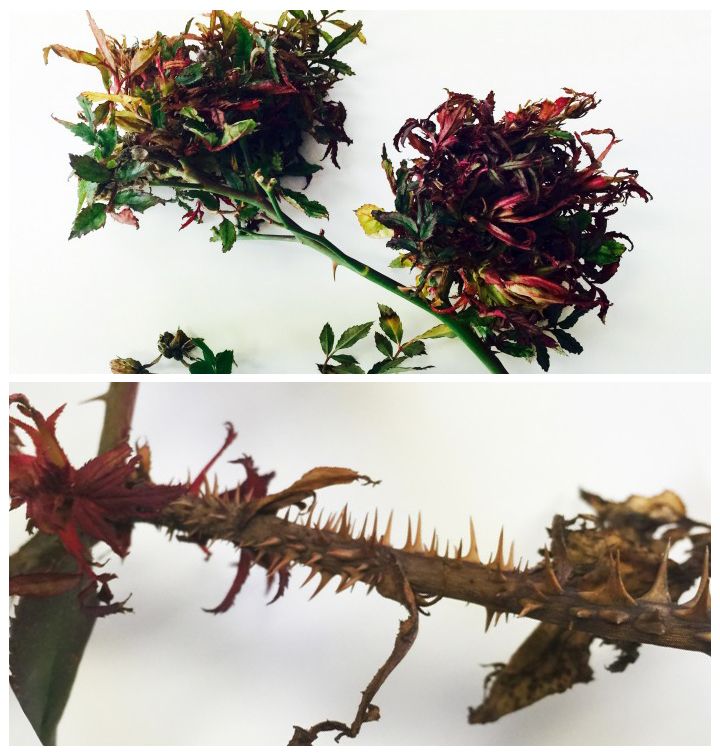Do Your Roses Have Rose Rosette Disease?
April 20, 2015 | By webadmin
Could your rose plants have Rose Rosette Disease? This destructive disease is killing plants across the country! If this is the first time you’ve heard of Rose Rosette Disease (RRD), be warned … if your rose plants are infected “There is no cure yet, and this disease is spreading like wildfire.” says Eric Taylor, Horticulture Manager of Roundtree Landscaping. RRD is caused by a virus spread by a tiny Eriophyid mite named Phyllocoptes fructiphilus. Systemic mite treatments available to homeowners are not effective for treating the mite. On average, RRD takes 22 months to kill the entire rose plant. It's this "slow death" that can sometimes trick gardeners into thinking they may have cured their plants. RRD is a disease that only affects roses, but it does affect all varieties. There are no rose vareities resistant to RRD.
Look for these symptoms then call in a professional for a dignosis if you're unsure. For a more detailed report on Rose Rosette Disease, visit our Learning Page HERE.
- Overabundance of foliage, especially at the tops of branches, giving it the “witches broom” effect.
- Leaves and branches are bright red and are distorted or twisted.
- Excessive thorns along the stems that are also very bright red.
- Lack of winter hardiness.

Notice the extreme flush of foliage on this plant giving it the “witches broom” effect in the photo above. This is the most noticeable symptom of the disease.Remember, this is no cure for RRD and the mite spread to surrounding plants.
Treatment Options
At this moment, removal is the only option.
- Remove the entire plant, all of its root system and any leaf litter under the plant where mites can take refuge.
- Infected plants and leaves should not be added to the compost pile.
- Bag them up and put it in the trash to avoid spreading RRD to other roses.
I’ve Pulled My Roses: Now What?
Once roses infected with RRD have been removed from your landscape, it's tempting to plant new roses in the same spot right away. However, remember that tiny pieces of infected root tissue can sprout new infected shoots; which can then potentially reintroduce the virus to your landscape. It’s best to wait a year or two before planting new roses. We love roses, however there are many beautiful options to plant in their place. Also be on the lookout for RRD in your neighbor’s roses. If they are infected, it’s only a matter of time before your roses will become infected.
If you think your roses could have Rose Rosette Disease, please call us or another qualified landscape company to diagnose and properly remove the plant.
For a more detailed report on Rose Rosette Disease, visit our Learning Page HERE.
